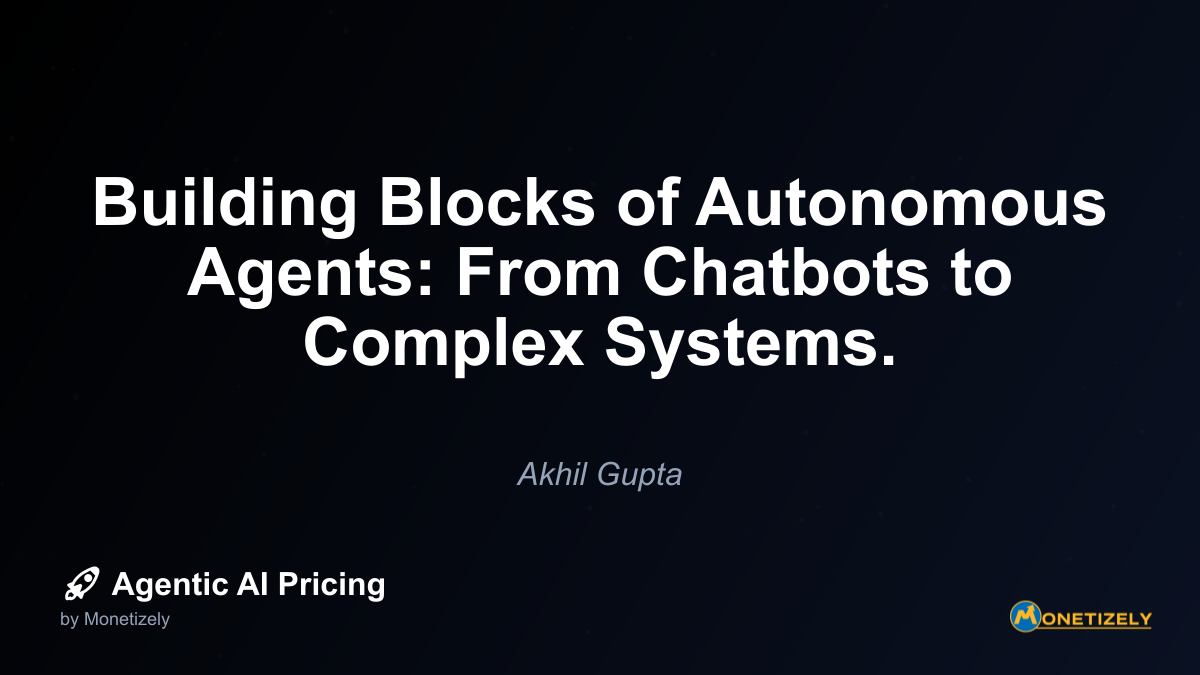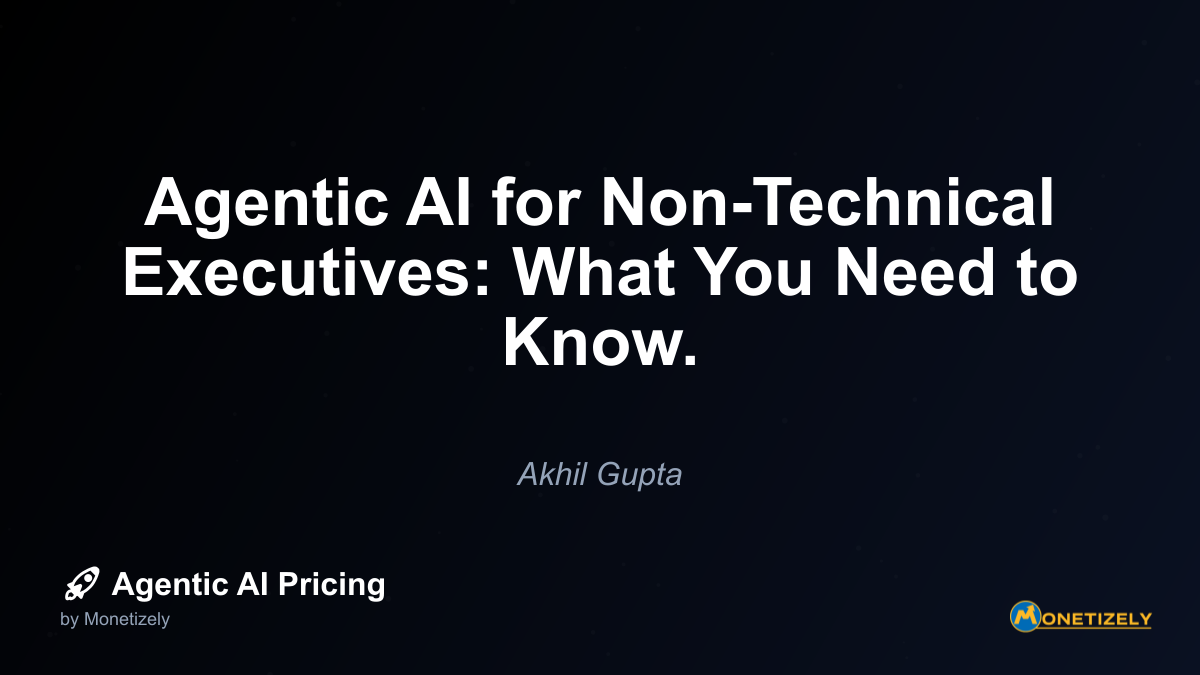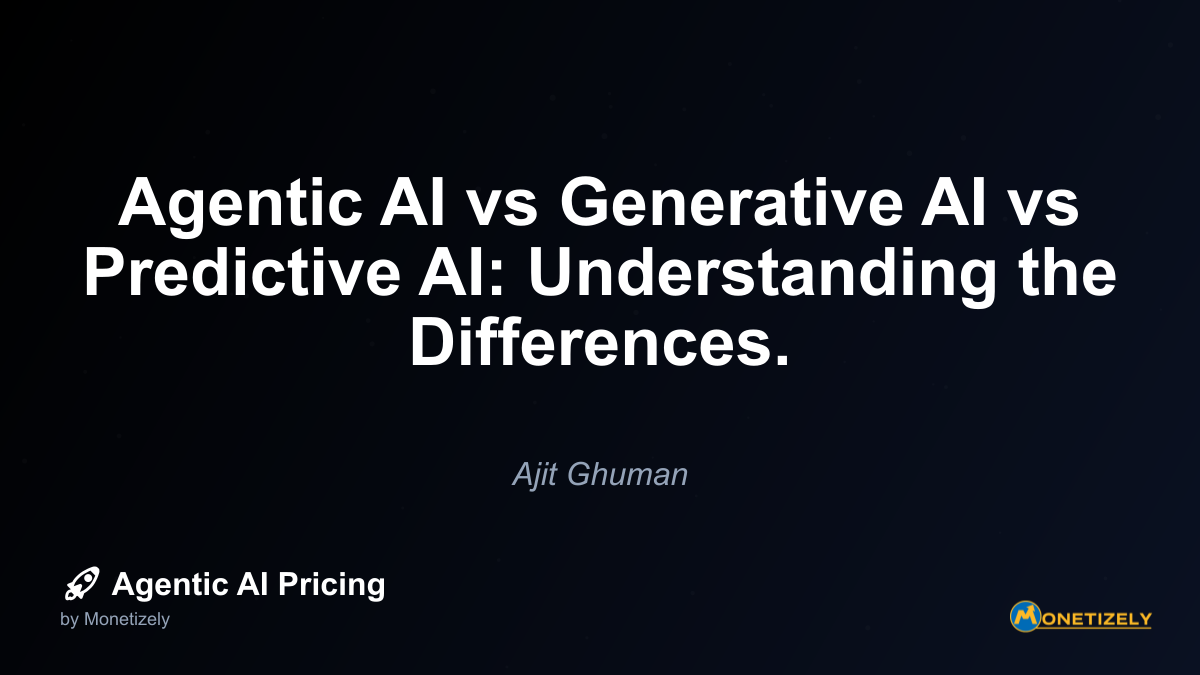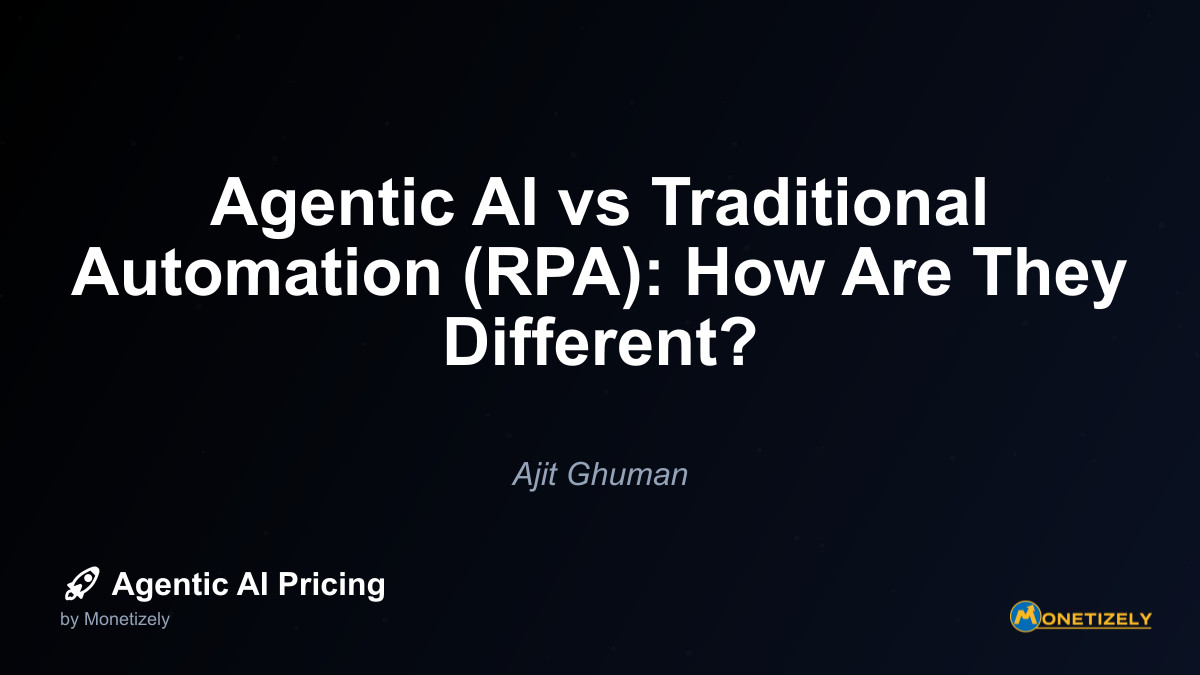· Akhil Gupta · Agentic AI Basics · 9 min read
Key Components of an AI Agent (LLMs, Tools, Memory)
AI and SaaS Pricing Masterclass
Learn the art of strategic pricing directly from industry experts. Our comprehensive course provides frameworks and methodologies for optimizing your pricing strategy in the evolving AI landscape. Earn a professional certification that can be imported directly to your LinkedIn profile.
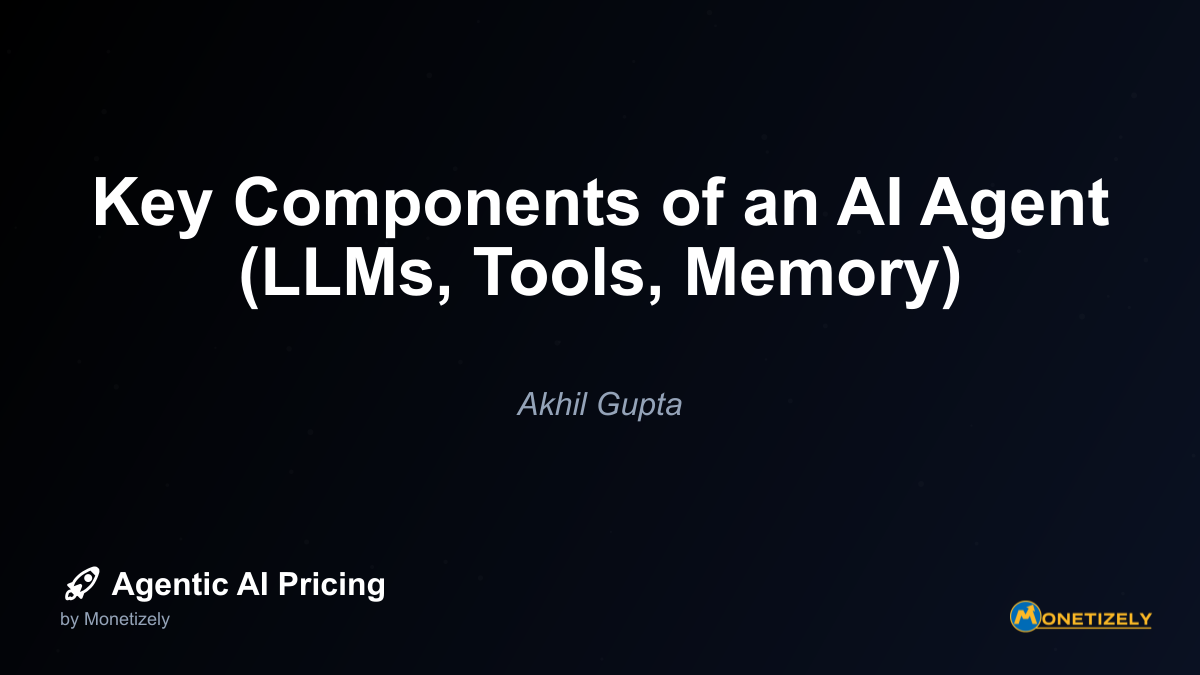
The modern AI landscape has been revolutionized by the emergence of AI agents – autonomous systems capable of understanding, planning, and executing tasks with minimal human supervision. These agents represent a significant leap beyond traditional AI applications, offering unprecedented levels of automation and problem-solving capabilities. But what exactly makes an AI agent work? At their core, these systems combine several critical components that function harmoniously to create what appears to be intelligent, autonomous behavior.
The Three Pillars of Agentic AI
Every effective AI agent relies on three fundamental components: a large language model (LLM) serving as its cognitive engine, a suite of tools that extend its capabilities beyond language processing, and memory systems that provide context and continuity. Together, these elements transform what would otherwise be a simple text processor into a system capable of complex reasoning and action.
Understanding these components isn’t merely academic – it’s essential knowledge for anyone looking to implement, optimize, or price AI agent solutions in today’s competitive market. Let’s examine each pillar in detail to understand how they contribute to the agent’s overall functionality and value proposition.
Large Language Models: The Cognitive Engine
At the heart of every AI agent lies a large language model (LLM). These sophisticated neural networks have been trained on vast corpora of text data, enabling them to process, interpret, and generate human language with remarkable fluency.
How LLMs Power AI Agents
LLMs serve as the “brain” of an AI agent, providing several critical functions:
Natural Language Understanding: LLMs can interpret user instructions, questions, and commands expressed in everyday language. This capability allows for intuitive human-agent interaction without requiring specialized programming knowledge.
Reasoning and Decision-Making: Modern LLMs demonstrate impressive reasoning capabilities, allowing them to analyze situations, weigh options, and make decisions based on available information. This enables agents to determine appropriate actions in response to user requests.
Content Generation: LLMs excel at generating coherent, contextually appropriate text. This allows agents to provide explanations, summarize information, draft content, and communicate their reasoning process.
Task Planning: Advanced LLMs can break complex tasks into logical sequences of steps, effectively creating execution plans that guide the agent’s actions.
Evolution of LLMs in Agent Systems
The capabilities of AI agents have evolved dramatically alongside improvements in underlying LLM technology:
First-Generation LLMs (like earlier GPT models) provided basic language understanding but lacked the reasoning depth needed for truly autonomous action.
Current-Generation LLMs (such as GPT-4, Claude, and Llama 2) offer significantly enhanced reasoning, planning, and self-correction abilities, making them suitable cores for sophisticated agent systems.
Specialized LLMs are now being fine-tuned specifically for agent applications, with enhanced capabilities in areas like planning, tool use, and domain-specific knowledge.
LLM Selection Considerations
When designing or evaluating an AI agent, the choice of LLM significantly impacts both performance and cost structure:
Model Size: Larger models generally offer superior reasoning capabilities but come with higher computational costs and slower response times.
Specialization: Domain-specialized LLMs may outperform general models in specific applications while requiring less computational resources.
Inference Costs: The operational expenses of running an LLM-based agent scale with the model’s size and usage patterns, creating important pricing considerations.
Latency Requirements: Time-sensitive applications may require smaller, faster models despite potential capability tradeoffs.
Tool Integration: Extending Agent Capabilities
While LLMs excel at language processing and reasoning, they remain fundamentally text processors with inherent limitations. They cannot directly access the internet, manipulate files, interact with databases, or perform calculations beyond what they’ve been trained to do. This is where tool integration becomes crucial.
What Are Agent Tools?
In the context of AI agents, tools are functions or APIs that extend the agent’s capabilities beyond language processing. These tools allow the agent to:
- Access External Information: Through web search tools, database connectors, or API integrations
- Perform Specialized Calculations: Using calculators, spreadsheets, or specialized computational engines
- Manipulate Data: Through file handling, data processing, or transformation tools
- Interact with Other Systems: Via API calls, service integrations, or system connectors
Common Types of Agent Tools
The toolkit available to an AI agent defines its practical capabilities:
- Information Retrieval Tools: Search engines, knowledge bases, document retrievers, and data extractors
- Computational Tools: Calculators, code interpreters, statistical analyzers, and spreadsheet processors
- Creation Tools: Image generators, document creators, code generators, and content formatters
- Communication Tools: Email senders, messaging interfaces, notification systems, and scheduling assistants
- Specialized API Connectors: Weather services, financial data providers, e-commerce platforms, and CRM systems
The Tool Selection Process
Effectively equipping an AI agent requires strategic tool selection based on:
- Use Case Requirements: Tools should directly address the specific tasks the agent needs to perform
- Integration Complexity: Some tools require sophisticated handling logic and error management
- Cost Considerations: External API calls and service usage contribute to operational costs
- Security and Compliance: Tools with access to sensitive data require appropriate security measures
Tool Orchestration Challenges
Beyond mere availability, tools must be effectively orchestrated:
- Tool Selection Logic: The agent must determine which tool is appropriate for a given task
- Parameter Preparation: Arguments and inputs must be correctly formatted for each tool
- Error Handling: The agent must gracefully manage tool failures and unexpected outputs
- Output Processing: Results from tools must be interpreted and incorporated into the agent’s reasoning
The complexity of tool orchestration represents one of the core challenges in agent development. The LLM must not only understand which tools are available but also how and when to use them effectively.
Memory Systems: Providing Context and Continuity
The third essential component of effective AI agents is memory. Without memory systems, agents would treat each interaction as isolated, lacking the context needed for coherent, personalized experiences.
Types of Agent Memory
AI agents typically implement several forms of memory:
- Short-Term Context Memory: Maintains awareness of the current conversation or task session
- Long-Term Memory: Stores information across sessions for consistent personalization
- Episodic Memory: Records specific interactions and events for future reference
- Semantic Memory: Organizes conceptual knowledge and learned information
Memory Implementation Approaches
Several technical approaches enable agent memory:
- Context Window Utilization: Using the LLM’s built-in context window to maintain recent conversation history
- Vector Databases: Storing embeddings of previous interactions for semantic retrieval
- Structured Databases: Organizing factual information in traditional database structures
- Memory Summarization: Creating condensed representations of interaction history
The Critical Role of Memory in Agent Performance
Memory systems contribute to agent effectiveness in multiple ways:
- Personalization: Remembering user preferences and past interactions enables tailored experiences
- Consistency: Maintaining awareness of previous discussions prevents contradictions
- Efficiency: Recalling previously established information eliminates redundant exchanges
- Learning: Accumulating experience allows for improvement over time
Memory Management Challenges
Implementing effective memory systems involves several challenges:
- Relevance Determination: Identifying which memories are pertinent to the current situation
- Storage Optimization: Balancing comprehensive retention against storage costs
- Privacy Considerations: Ensuring appropriate handling of potentially sensitive information
- Memory Decay: Implementing systems to prioritize recent or important memories
Integration: How Components Work Together
The true power of AI agents emerges from the seamless integration of these three components. The interaction between LLM, tools, and memory creates a system greater than the sum of its parts.
The Agent Execution Loop
A typical AI agent operates through an iterative process:
- Input Processing: The LLM interprets user input in the context of available memory
- Reasoning and Planning: The LLM determines appropriate actions and tool usage
- Tool Execution: Selected tools are invoked with LLM-generated parameters
- Output Integration: Tool results are incorporated into the LLM’s reasoning process
- Response Generation: The LLM produces a response based on all available information
- Memory Update: Relevant aspects of the interaction are stored in memory
Architectural Approaches
Several architectural patterns have emerged for integrating these components:
- Centralized Controller: The LLM serves as the central decision-maker, directly orchestrating all tool usage
- Hierarchical Systems: Multiple specialized agents handle different aspects of complex tasks
- Reactive Frameworks: Event-driven architectures where tools and memory systems trigger specific agent behaviors
Performance Optimization
Balancing component interactions affects overall system performance:
- Prompt Engineering: Carefully crafted instructions help the LLM effectively use tools and memory
- Caching Strategies: Storing common tool results reduces redundant operations
- Parallel Processing: Running compatible operations simultaneously improves response time
- Progressive Enhancement: Deploying additional capabilities based on task complexity
Pricing Implications of Agent Components
The component architecture of AI agents has direct implications for pricing strategies:
Cost Drivers by Component
Each component contributes differently to the overall cost structure:
- LLM Costs: Typically based on token usage, with larger models commanding premium prices
- Tool Usage Costs: Often involve per-call or subscription fees for external services
- Memory Storage Costs: Scale with the volume and retention period of stored information
- Computational Overhead: Increases with the complexity of integration logic
Value-Based Pricing Considerations
The value delivered by an agent stems from its component capabilities:
- Task Complexity: Agents handling complex tasks requiring sophisticated tool orchestration justify premium pricing
- Specialization Premium: Domain-specific agents with specialized tools command higher prices
- Personalization Value: Advanced memory systems enabling highly personalized experiences increase perceived value
- Autonomy Level: Agents requiring less human supervision deliver greater time savings
Pricing Model Options
Component architecture influences appropriate pricing models:
- Usage-Based Models: Charging based on LLM tokens processed, tool calls made, or memory utilized
- Capability Tiers: Offering different pricing levels based on available tools and memory capacity
- Outcome-Based Pricing: Charging based on successful task completions rather than resource utilization
- Hybrid Approaches: Combining subscription access with usage-based components
Future Evolution of Agent Components
The component architecture of AI agents continues to evolve rapidly:
Emerging LLM Advancements
- Multimodal Models: Incorporating image, audio, and video understanding capabilities
- Specialized Agent Models: LLMs specifically optimized for agent applications
- Efficiency Improvements: Smaller models delivering comparable performance at lower cost
Tool Ecosystem Expansion
- Standard Tool Interfaces: Emerging protocols for consistent tool integration
- Tool Marketplaces: Ecosystems of specialized tools developed by third parties
- Self-Extending Agents: Systems capable of discovering and integrating new tools autonomously
Memory System Innovations
- Hierarchical Memory: More sophisticated organization of different memory types
- Cross-Agent Memory: Shared knowledge bases across multiple agent instances
- Forgetting Mechanisms: Intelligent systems for deprioritizing less relevant information
Implementing Your First AI Agent
For organizations looking to develop their first AI agent, understanding these components guides implementation strategy:
Step 1: Define Capability Requirements
Begin by clearly identifying what your agent needs to accomplish:
- What types of requests will it handle?
- What information sources will it need to access?
- What actions should it be able to take?
Step 2: Select Core Components
Based on your requirements, choose appropriate components:
- Which LLM provides the right balance of capability and cost?
- What specific tools will enable the required functionality?
- What memory requirements exist for your use case?
Step 3: Start Simple and Iterate
Begin with a minimal viable implementation:
- Implement core functionality with limited tools
- Test extensively with real-world scenarios
- Expand capabilities based on observed limitations
Step 4: Optimize for Cost-Effectiveness
Balance capability against operational costs:
- Monitor component usage patterns
- Identify opportunities for efficiency improvements
- Consider specialized models or tools for high-volume operations
Conclusion
The three-component architecture of AI agents – combining LLMs, tools, and memory systems – provides a powerful framework for understanding these systems’ capabilities, limitations, and pricing implications. By appreciating how these elements work together, organizations can make more informed decisions about implementing, optimizing, and pricing AI agent solutions.
As the technology continues to mature, we can expect increasingly sophisticated integration between these components, leading to agents with greater autonomy, efficiency, and value-creation potential. The organizations that develop a deep understanding of this component architecture will be best positioned to leverage AI agents for competitive advantage.
When developing your AI agent strategy, remember that the most effective implementations carefully balance these components to match specific business requirements. By thoughtfully selecting and integrating the right LLM, tools, and memory systems, you can create agent solutions that deliver exceptional value while maintaining cost-effectiveness.
Co-Founder & COO
Akhil is an Engineering leader with over 16+ years of experience in building, managing and scaling web-scale, high throughput enterprise applications and teams. He has worked with and led technology teams at FabAlley, BuildSupply and Healthians. He is a graduate from Delhi College of Engineering and UC Berkeley certified CTO.
Pricing Strategy Audit
Let our experts analyze your current pricing strategy and identify opportunities for improvement. Our data-driven assessment will help you unlock untapped revenue potential and optimize your AI pricing approach.

